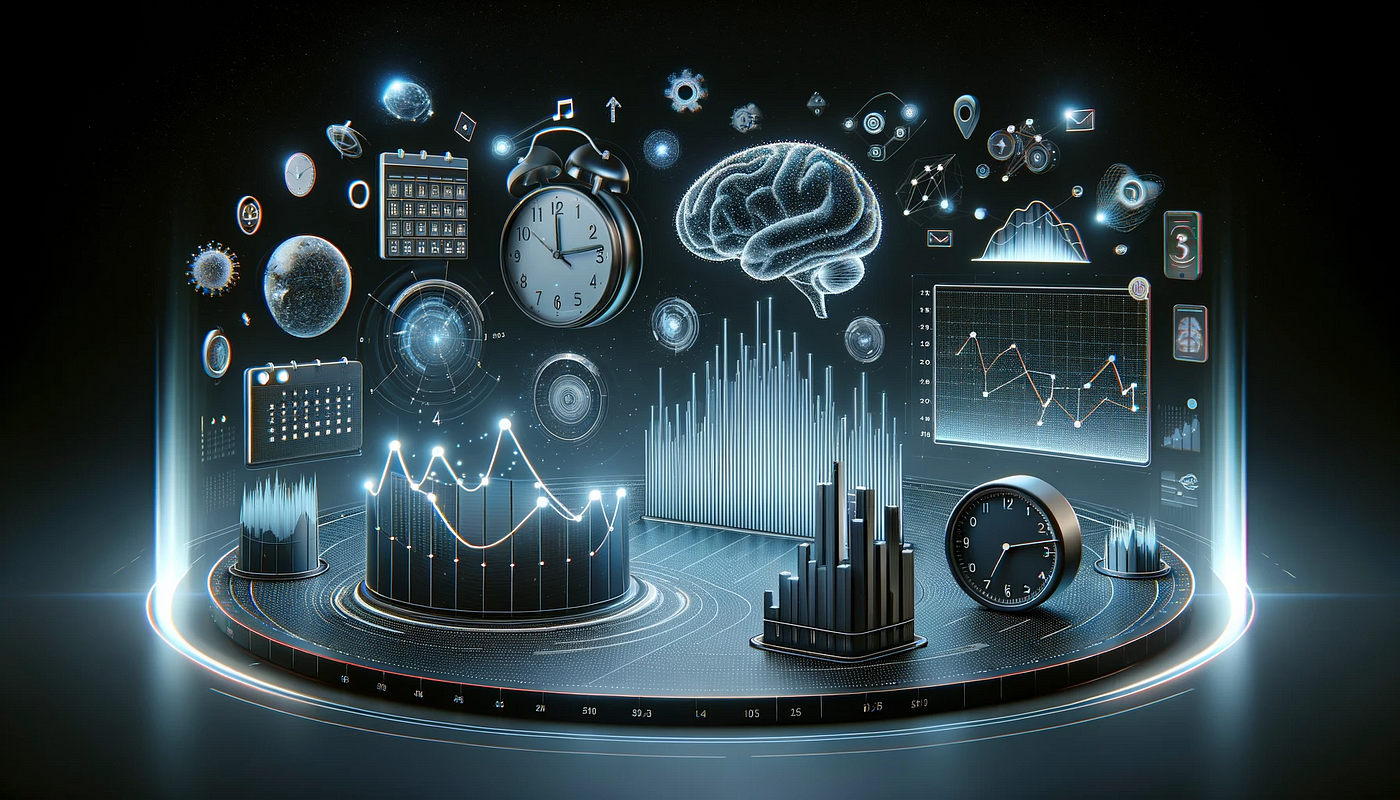Time Series Analysis in Data Science: Forecasting Trends and Patterns
Revealing Insights and Boosting Predictive Abilities
Introduction-
Time series analysis constitutes a fundamental aspect of data science, enabling us to extract valuable insights from sequential data points recorded over time. In this comprehensive guide, we will delve into the essentials of time series analysis, highlighting its significance in data science and exploring the methodologies employed to accurately forecast trends and patterns.

Understanding Time Series Data-
Time series data comprises observations recorded at regular intervals over time. Examples encompass stock prices, weather measurements, sales figures, and sensor readings. Each data point is linked to a specific timestamp, forming a chronological sequence.
Significance of Time Series Analysis-
Time series analysis holds pivotal importance across various domains, including finance, economics, healthcare, and environmental science. By scrutinising historical data patterns, businesses can make informed decisions, predict future trends, and devise effective strategies. In healthcare, time series analysis aids in predicting disease outbreaks, monitoring patients, and optimising treatments.
Key Components of Time Series Analysis-
Trend: Represents the long-term movement or direction of data points, indicating overall growth or decline.
Seasonality: Refers to periodic fluctuations or patterns occurring at regular intervals, such as daily, weekly, or yearly cycles
Cyclical Patterns: Encompass recurring trends that are no strictly periodic and may have varying durations.
Irregularity: Denotes random fluctuations or noise in the data that cannot be attributed to trend, seasonality, or cycles.
Methodologies for Time Series Forecasting-
Moving Averages: A straightforward yet effective method that calculates the average of a sliding window of data points to smooth out fluctuations and identify trends.
Exponential Smoothing: Involves assigning exponentially decreasing weights to older data points, giving more prominence to just observations.
Autoregressive Integrated Moving Average (ARIMA): A statistical model that combines autoregression, differencing, and moving averages to capture complex patterns in time series data.
Seasonal Decomposition: Decomposes a time series into its trend, seasonal, and residual components, enabling individual analysis and forecasting.
Machine Learning Algorithms: Advanced techniques such as regression, decision trees, and neural networks can be applied to time series data for forecasting, particularly when dealing with large and complex datasets.
Steps in Time Series Forecasting-
Data Preprocessing: Involves cleaning the data, handling missing values, and ensuring uniformity in timestamps.
Exploratory Data Analysis (EDA): Entails visualising the time series data to identify trends, seasonality, and outliers.
Model Selection: Involves choosing an appropriate forecasting model based on the characteristics of the data and the desired level of accuracy.
Model Training: Comprises fitting the selected model to historical data to learn patterns and parameters.
Model Evaluation: Entails assessing the performance of the trained model using validation techniques such as cross-validation and out-of-sample testing.
Forecasting: Involves generating future predictions based on the trained model and evaluating forecast accuracy using metrics such as Mean Absolute Error (MAE) and Root Mean Square Error (RMSE).
Applications of Time Series Forecasting-
Financial Forecasting: Predicting stock prices, currency exchange rates, and market trends to inform investment decisions.
Demand Forecasting: Anticipating consumer demand for products and services to optimise inventory management and production planning.
Energy Consumption Forecasting: Estimating electricity demand and consumption patterns to optimise energy generation and distribution.
Weather Forecasting: Predicting temperature, precipitation, and weather patterns to support agricultural planning, disaster preparedness, and resource management.
Healthcare Forecasting: Forecasting disease outbreaks, patient admissions, and healthcare resource utilization to improve healthcare delivery and resource allocation.
Conclusion-
Time series analysis stands out as a powerful technique in data science for predicting trends and patterns in sequential data. By understanding the fundamentals of time series data, choosing suitable forecasting methods, and adhering to systematic steps in the forecasting process, businesses and organisations can extract valuable insights, make well-informed decisions, and stay competitive in a dynamic and constantly evolving landscape. Moreover, enrolling in a best data science course in Faridabad, Delhi, Dehradun, and other regions across India can equip professionals with the essential skills to excel in this domain and leverage time series analysis effectively to enhance business performance.